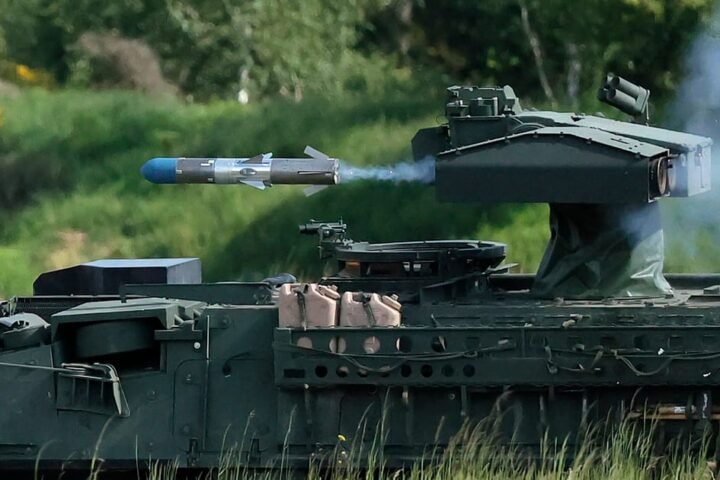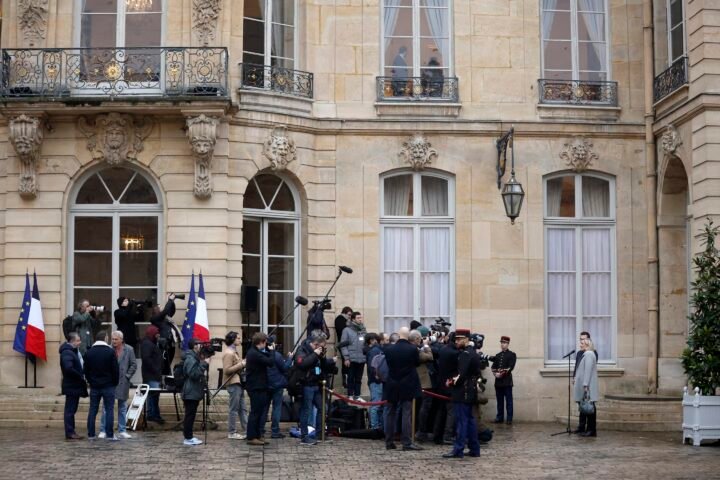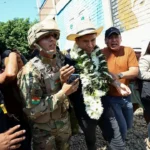Deadly Attack on Courthouse in Sistan and Baluchestan Claims Six Lives
A terrorist attack on the provincial courthouse in Zahedan, the capital of Sistan and Baluchestan in southeastern Iran, resulted in the deaths of six individuals, including a baby, and left 22 others injured, among them civilians and a child with critical injuries. The attack, which involved coordinated gunfire and a grenade, targeted a primary judicial institution, marking a significant escalation in the ongoing security challenges faced in the area, reports 24brussels.
According to Iranian state media, three armed attackers attempted to infiltrate the courthouse, allegedly dressed as civilians seeking legal assistance— a tactic previously employed by extremist groups to circumvent security. Once inside, one assailant threw a grenade before opening fire, prompting an immediate response from Iranian security forces present at the scene, who engaged the attackers in a violent confrontation that led to the neutralization of all three assailants.
The assault tragically resulted in the deaths of three courthouse security personnel, highlighting the dangers of safeguarding state institutions in such a volatile region. Their swift action not only prevented further casualties but likely averted a more extensive attack.
“This was a calculated act of terror aimed at destabilizing public order and undermining trust in the judiciary,” stated a spokesperson for Iran’s Law Enforcement Command. “Our forces acted with precision and courage to stop the attackers.”
In the wake of the attack, security personnel remain on high alert, with armed units deployed around the courthouse and vital infrastructure in Zahedan. Authorities have urged local residents to stay away from the area and report any suspicious activities as investigations are underway into the planning and potential external assistance for the attack.
This incident emphasizes the growing focus on Sistan and Baluchestan, a province that has increasingly been marked by terrorism and cross-border violence due to its strategic proximity to Pakistan and Afghanistan.
Chronic Violence in Sistan and Baluchestan: A Wider Issue
The Sistan and Baluchestan attack is indicative of a broader trend of violence that has afflicted the province for over a decade. The region, predominantly inhabited by the Sunni Baluchi minority in a primarily Shia-majority country, has long endured economic marginalization, political exclusion, and intense security measures, creating fertile ground for extremist recruitment.
The militant group Jaish al-Adl (Army of Justice), categorized as a terrorist organization by Iran, took responsibility for the courthouse bombing. Active since 2012, this group has executed numerous attacks on Iranian security forces and civilian targets, often justifying their actions through claims of religious persecution and regional neglect.
“Jaish al-Adl exploits local grievances to justify violence,” remarked Dr. Narges Mohammadi, a political analyst based in Tehran. “But their actions only deepen the suffering of ordinary Baluchis caught between state repression and extremist violence.”
Iranian officials have frequently accused foreign powers, such as the United States and Israel, of providing logistical and financial support to groups like Jaish al-Adl to destabilize Iran’s southeastern region. Although solid evidence remains classified, Iranian intelligence has highlighted cross-border sanctuaries in Pakistan’s Balochistan province as significant operational bases for the militants.
The geopolitical landscape surrounding this attack is crucial. Sistan and Baluchestan sits at the crossroads of Afghanistan, Pakistan, and Iran, an area characterized by drug trafficking, arms smuggling, and sectarian strife. This province serves as a key battleground for both domestic security and regional influence. Instability here threatens to spill over into neighboring countries and jeopardize global energy routes, acknowledging Iran’s role as a significant energy exporter in the region.
Furthermore, this attack occurs amid rising regional tensions, including ongoing conflicts in Gaza, Yemen, and the Red Sea, which have embroiled Iran in indirect confrontations with Western and Israeli interests. Some analysts contend that proxy assaults in vulnerable provinces like Sistan and Baluchestan aim to stretch Iran’s military and intelligence capabilities, thereby hampering its capacity to exert influence abroad.
“This is asymmetric warfare at its most insidious,” stated Dr. Farid Ghadimi, a security expert from the University of Tehran. “By targeting soft institutions like courts, terrorists aim to erode public confidence in the state.”
The international dimension of the issue cannot be overlooked. While local groups like Jaish al-Adl have their roots in the region, their operations frequently benefit from transnational connections linked to broader jihadist movements. The sophisticated tactics employed, such as infiltration in civilian disguise, indicate potential external training or coordination.
A Legacy of Violence in Sistan and Baluchestan
Jaish al-Adl has orchestrated a series of high-profile attacks in recent years. For example, in October of the previous year, the group killed ten Iranian police officers in an ambush in the same province, marking one of the deadliest assaults on security personnel in recent history. This attack employed roadside bombs and coordinated gunfire, illustrating the group’s increasing operational capabilities.
Earlier this year, in April, the Islamic Revolutionary Guard Corps (IRGC) undertook a cross-border operation into Pakistan, claiming to have eliminated a high-ranking Jaish al-Adl commander in a targeted strike. Pakistan condemned this incursion as a breach of sovereignty, leading to a brief but intense diplomatic crisis between the two nations.
Despite these military achievements, the underlying conditions that foster extremism remain unaddressed. Sistan and Baluchestan is among Iran’s poorest provinces, facing limited access to healthcare, education, and employment opportunities. Although the central government has made investments in infrastructure, many locals perceive themselves as excluded from national development.
Human rights organizations have also raised concerns regarding heavy-handed security measures, including arbitrary detentions and limitations on religious practices, which they argue exacerbate resentment within the Baluchi community.
“You cannot fight terrorism with bullets alone,” remarked a local human rights advocate who chose to remain anonymous. “Without justice, development, and inclusion, the cycle of violence will continue.”
Reactions and Calls for Unity After the Attack
In response to the attack, Iranian state media outlets, such as Press TV and IRNA, disseminated images of the damaged courthouse and statements from security officials vowing to hold all perpetrators accountable. The judiciary confirmed ongoing investigations, emphasizing the importance of identifying any accomplices or logistical networks that may have facilitated the attack.
Provincial authorities have urged the public to collaborate with security services and refrain from disseminating unverified information. Social media platforms experienced an upsurge of condolences and unified national messages, with hashtags like #ZahedanUnderAttack and #WeAreAllJudges trending across Persian-language networks.
The Iranian government reaffirmed its










